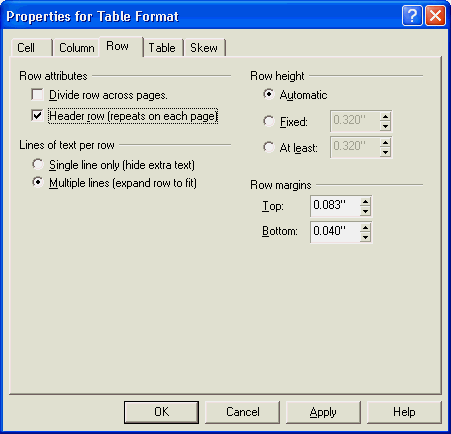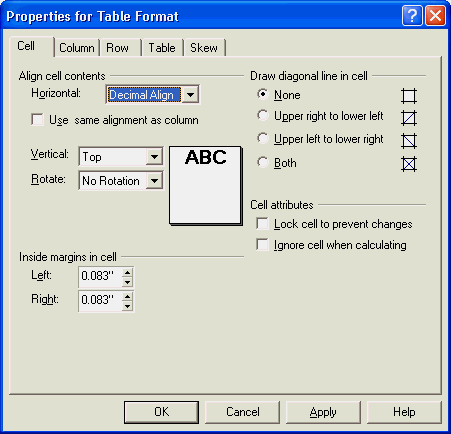Ten frequently asked questions about table formatting in WordPerfect
by Laura Acklen
www.wpwriter.com
The Table feature in WordPerfect® is enormously popular and is accessed by nearly all users, regardless of their industry or level of expertise. Its ease of use, flexible formatting, and built-in spreadsheet functions make it the perfect tool for organizing information.
This frequently asked questions (FAQ) tutorial is the first in a two-part series that focuses on the Table feature. Part 1 covers common problems related to table formatting; Part 2 will tackle common questions regarding table math. In addition, you can refer to two tutorials from previous issues of the WordPerfect Expert newsletter that cover creating forms with tables and creating formulas in tables.
Q: How can I make the heading rows of my table appear on every page?
A: If you label your column headings as "header rows," they will appear at the top of every page. You can use more than one row of column headings, but only for consecutive rows. For example, you can set rows 1 through 3 as header rows, but not rows 1 and 3. To set up header rows, select the row or rows, and choose Table > Format. Click the Row tab, and then enable the Header Row check box (see Figure 1).
Tip: It's nice to know a few shortcuts for opening the Properties for Table Format dialog box. In addition to choosing Table > Format from the menu bar, you can press Ctrl + F12, or you can right-click in the table and choose Format.

Figure 1
The Row page of the Properties for Table Format dialog box contains an option for setting header rows in a table.
Q: How can I get my numbers to line up by their decimal points?
A: Select the column (but not the column heading), or select the cells containing data that you want to align on the decimal points. Choose Table > Format. Click the Cell tab, open the Align cell contents drop-down list, and then choose Decimal Align (see Figure 2).
Tip: If you want to change the formatting for more than one cell, select the cells first, and then make your changes in the Properties for Table Format dialog box — the changes will apply to all of the selected cells.

Figure 2
Choose Decimal Align from the drop-down list in the Align cell contents section of the Cell page.
Q: Why are some cells aligned properly, and others are not?
A: Tables have different levels of formatting: cell, column/row, and table. Cell formatting is at the top of the hierarchy, so it overrides the other formatting levels. Column/row formatting is next, and table formatting is last.
For example, if you have set formatting on the Table page and later make changes on the Column or Row pages, the changes override the settings made on the Table page. By the same token, changes made to a cell or group of cells override settings made on the Column, Row or Table pages.
The quickest way to correct inconsistencies is to select the cell or cells, choose Table > Format, and make your changes on the Cellpage.
Q: Why did a row move down to the next page?
A: Table rows adjust so that they are always as tall as the tallest cell in the row. If one cell in a row has enough text to wrap down to the next page, the entire row moves down. This can leave a big space at the bottom of the page. What can you do about it?
Well, first make sure that you don't have extra hard returns (check every cell in the row). It's easy to press Enter when you are finished typing in a cell and want to go to the next cell. Not only does pressing Enter not take you to the next cell, it adds space to your table. Instead, move to the next cell by pressing an arrow key or Tab; move to the previous cell by pressing Shift + Tab.
If taking out extra hard returns doesn't solve the problem, you can split the row into two rows and then manually cut and paste some of the text into the new row. To do this, select the row, and choose Table > Split > QuickSplit Row. Now, decide where you want the text to break, and move the remaining content down to the new row.
Was this article helpful?
Tell us how we can improve it.